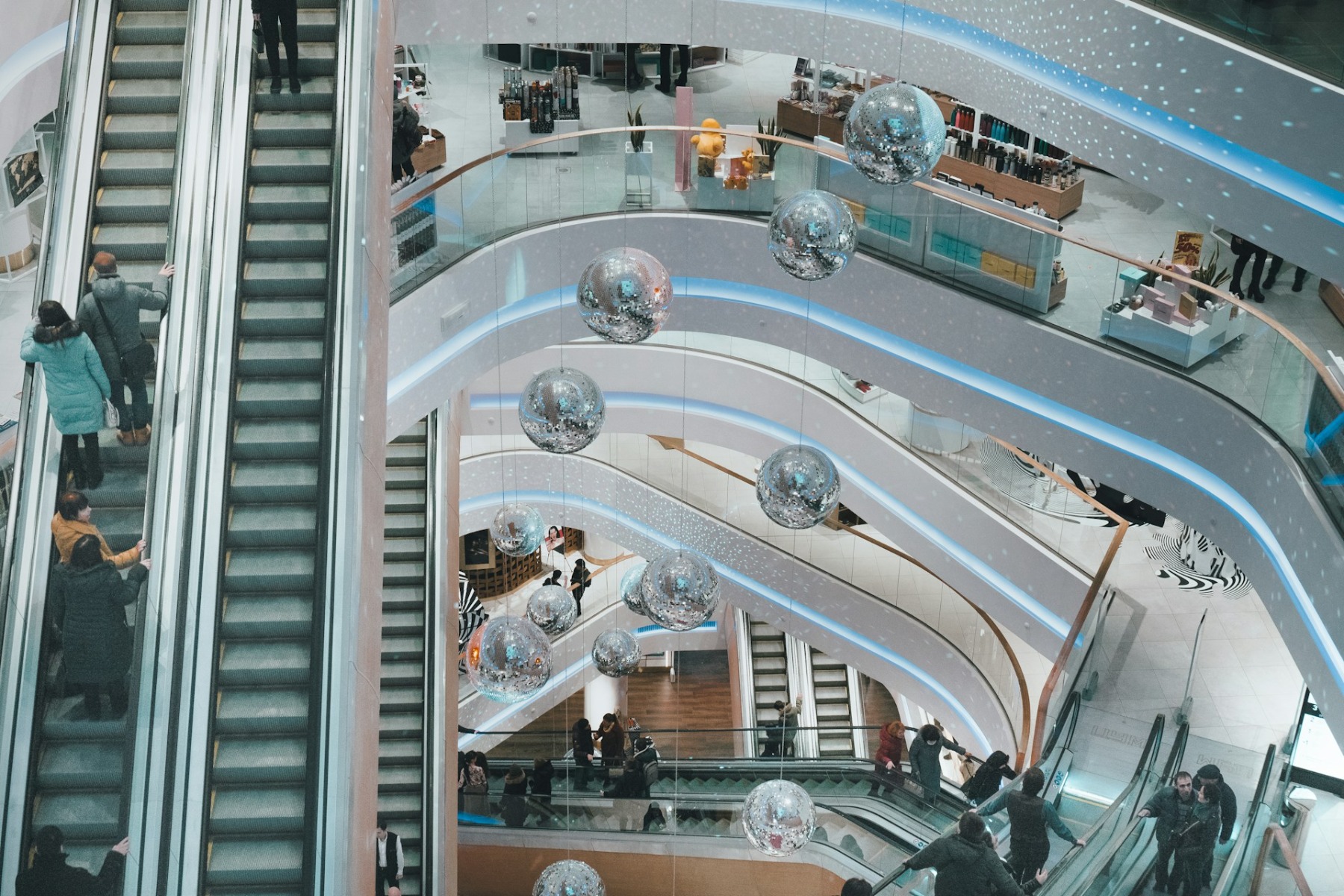We use cookies to make your experience better. To comply with the new e-Privacy directive, we need to ask for your consent to set the cookies. Learn more.
Experiential Retail - What Is It? | Adventa
As online shopping becomes increasingly popular, the death knell of the physical retail industry might be expected. However, the industry is tenacious and innovative, and alternative models are being considered and implemented across the globe.
Experiential retail is one of the new forms of retail that has popped up in recent years. But what is it, and what does it offer businesses and consumers? In this post, Adventa explores the concept of experiential retail, how it works, what it costs, and which retailers are doing it well. Keep reading to understand what experiential retail is.
What is Experiential Retail?
Experiential retail, also known as “retailtainment”, is a marketing strategy in which a physical retail store offers its customers experiences that go beyond browsing and buying. Through exclusive in-store events and services, as well as engaging staff and technologies, the customer is given a memorable experience that elevates retail shopping.
Experiential retail is a reconstructed take on retail that focuses on the customer's experience. As the ease of online shopping becomes an increasingly important feature of retail, brick-and-mortar stores have been required to adjust how they do things. Creating engaging, tactile experiences that customers cannot experience online is the cornerstone of experiential retail.

How Does Experiential Retail Work?
Retail experience works by offering the customer something out of the ordinary. The way that this is done can differ from store to store or shopping centre to shopping centre. However, there are a few things to focus on when creating a retail shopping experience.
Experiential retailing prioritises customer engagement over sales. Businesses achieve this by stimulating the senses and defying expectations, creating an in-store experience that is immersive and interactive.
Another important element of experiential retail is that it should be shareable. So much of our lives are spent and shared on social media, and creating opportunities where customers can share their experiences on these platforms will make your experiential retail strategy that much more successful. An easy way to do this would be to set up an amazing photo opportunity.
An omnichannel approach is another important element of experiential retail. It allows for the integration of various marketing channels and touchpoints that aim to create a consistent and immersive customer experience.
Offering omnichannel options for purchasing allows the customer to buy from wherever they are, for a simple and seamless shopping experience. Statistics show that 73% of consumers use multiple channels to shop, making an omnichannel approach an important strategy for any business.
Some examples of an omnichannel approach in experiential retail include using mobile apps, creating in-store digital and interactive displays, offering click-and-collect options, using virtual or augmented reality, and leveraging social media to engage customers.
Lastly, experience retail focuses on the consumer's needs and nurtures communities. While technology may make our lives easier, they also make us more isolated. If a retail store can focus on building a community within its target audience, they are more likely to create return customers and a valuable community.
Advantages & Disadvantages of Experiential Retailing
Experiential retail can serve as a powerful strategy for attracting and retaining customers; however, it also comes with financial, logistical, and strategic challenges. Successful experiential retailing requires a well-thought-out plan that aligns with the brand's identity and customer expectations. You should carefully consider the pros and cons before implementing such a strategy.
Advantages of Experiential Retail
When experiential retailing is executed successfully, it can lead to numerous benefits, such as greater customer engagement, differentiation from competitors, improved brand loyalty and much more.
Customer Engagement
By creating a unique and memorable shopping experience within retail stores, you can develop emotional connections with your customers. This will result in more time spent in-store (more engagement), which creates opportunities for upselling and cross-selling.
Differentiation
In today's crowded market, standing out from your competitors is essential. Experiential retailing offers an effective way for you to demonstrate your brand's uniqueness and attract more attention, differentiating yourself from your competitors.
Increased Foot Traffic
Experiential retailing will draw people to your store, resulting in new customers, increased foot traffic and higher sales.
Brand Loyalty
When you create positive experiences with your customers, you foster an emotional connection with them. This should result in the development of stronger brand loyalty. Loyal customers are a priority for most businesses, as they tend to spend more (67%) than new customers and act as brand advocates, sharing positive reviews about your business.
Social Media Buzz
Shareable experiences encourage customers to promote brands on their social media. This is known as user-generated content. This organic marketing technique will help you reach a wider audience and boost your brand’s visibility.
Data Collection
Experiential retailing often incorporates technology, which can be used to collect customer data, such as their preferences and behaviours. This information can then be used to facilitate targeted marketing campaigns and drive product development.
Disadvantages of Experiential Retail
While experiential retailing offers endless opportunities, it doesn’t come without its challenges.
High Costs
The cost of experiential retail can differ hugely. Large companies with big budgets can typically do more, but small retailers have plenty to offer, too. Focus on offering a personalised experience that resonates with your brand and customers.
Resource-Intensive
Besides financial resources, experiential retail often calls for resources in the form of staff and time. It’s important to balance the needs of the campaign with the operational needs of the business.
Inconsistent Experiences
It’s all good and well trying to execute an experiential retail marketing strategy; however, as with all things in business, consistency is key. So, if you’re considering running a campaign at multiple stores or more than one campaign in the future, be sure to maintain a consistent brand experience for your customers.
Risk of Fads
Sometimes, experiential retail trends or concepts may be short-lived. This is why it’s essential to conduct thorough research before executing a strategy.
Examples of Successful Experiential Retail Campaigns
If you’re looking for a little inspiration, here are the five retailers that are making waves with their retail experiences.
1. Apple
Apple stores do not only sell products and services; they also offer interactive learning experiences by hosting workshops, classes, and live events. In doing this, they turn their stores into a space where people can learn and connect, fostering a sense of community and establishing Apple as a leader in innovation.
2. IKEA
This brand is well-known for its retail experiences. One of their best-known campaigns is their “in-store sleepover.” In 2011, IKEA allowed 100 customers to sleep over at their store in Essex, where customers were allowed to personalise their sleepover experience by selecting the bedding, pillows and even the beds they wanted (all from the IKEA catalogue, of course!).
3. Farfetch
The luxury fashion brand brought experiential retailing to life by introducing advanced technology to their store in London, where they installed connected clothing racks, touch-screen-enhanced mirrors and sign-in stations.
This allowed Farfetch to pull data collected from customers' online store experiences and personalise their in-store shopping journey. Additionally, the smart mirror allowed customers to search for alternative products or sizes and even pay for their goods, all from the comfort of their changing rooms.
4. Huda Beauty
This beauty brand successfully implemented an experiential retail campaign to launch one of its new products, an eye shadow palette called Mercury Retrograde. Huda Beauty set up a pop-up store in the middle of Covent Garden, creating an immersive sci-fi-themed experience for customers.
5. House of Vans
The House of Vans brand is another top experiential retailer, combining retail with live music, skateboarding and art events. At their 30,000 square feet London retail store, you can find everything from vans’ shoes to a cinema, an art gallery and, perhaps most importantly, a full-on skateboarding course. In doing this, they encourage customers to spend extended periods of time in their store, connecting and interacting with people who have shared interests.
Ready to Dip a Toe into the World of Experiential Retail?
While online shopping continues to grow in popularity, experiential retailing offers brands a chance to engage consumers and entice them to visit their brick-and-mortar stores.
By creating immersive experiences, brands can engage customers in a completely new way. It can also lead to stronger brand loyalty, increased sales, higher engagement and a host of other benefits. However, it also comes with challenges, such as high costs and the need for consistency.
So, while experiential retail marketing holds significant promise, it’s important that brands weigh up the pros and cons, and also draw inspiration from successful campaigns, such as those led by Apple, IKEA, Farfetch, Huda Beauty, and House of Vans. If you can do this, you will be able to create memorable shopping experiences that captivate your customers and set you apart from the competition.

